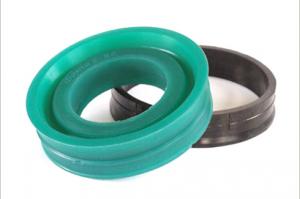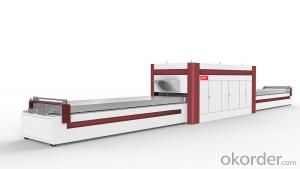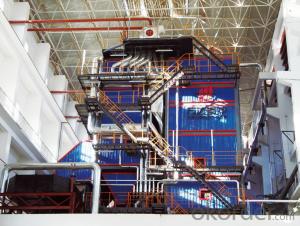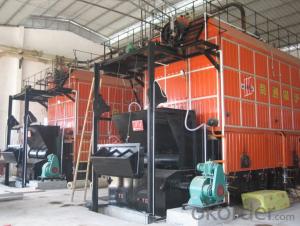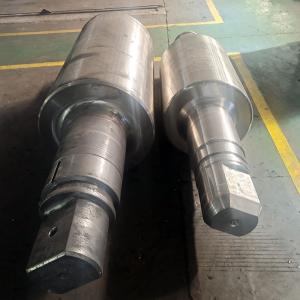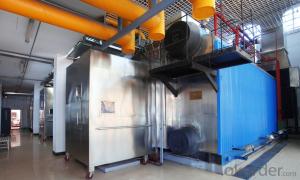Concrete Pump Zoomlion Seal Piston DN180 - DN230
- Loading Port:
- China Main Port
- Payment Terms:
- TT OR LC
- Min Order Qty:
- -
- Supply Capability:
- -
OKorder Service Pledge
Quality Product, Order Online Tracking, Timely Delivery
OKorder Financial Service
Credit Rating, Credit Services, Credit Purchasing
You Might Also Like
Brand: Schwing, Putzmeister, Sany,Zoomlion, IHI, Kyokuto, Sermac
Size: DN180 - DN230
Other products:
1) ST52 steel pipe, elbow, reducer
2) Wear-resisting board and Cuts ink
3) Coupling and seal ring for Putzmeister,Schwing, Sany
4) Rubber hose
5) Cleaning series and others
- Q:Are there any maintenance tips to extend the lifespan of concrete pump spare parts?
- Yes, there are several maintenance tips to extend the lifespan of concrete pump spare parts. Regular cleaning and lubrication of the parts, proper storage to prevent corrosion, and routine inspection for wear and tear are essential. Additionally, using high-quality spare parts and following manufacturer's guidelines for maintenance and operation can significantly increase their longevity.
- Q:Can I get spare parts for both concrete pumps with and without water tanks?
- Yes, you can get spare parts for both concrete pumps with and without water tanks.
- Q:What are the different types of concrete pump hopper pins?
- There are several types of concrete pump hopper pins, including snap pins, lynch pins, and clevis pins. These pins are used to secure the hopper to the pump and ensure it stays in place during operation.
- Q:What are the precautions for gas washing of concrete pump?
- Subsection blowing, should first blow off near the discharge end of a pipe, then has blown the empty tubes connected with not purged during the purge, the remaining part.
- Q:In general, how much concrete will be transported per hour for the concrete pump and the pump?
- The length of day pump 36-62m, the efficiency has little effect, regular work is generally 30-40 cubic / hour
- Q:What are the potential risks associated with the installation and replacement of concrete pump spare parts?
- The potential risks associated with the installation and replacement of concrete pump spare parts include: 1. Safety hazards: Improper installation or replacement of spare parts can lead to accidents and injuries, as concrete pumps involve heavy machinery and high-pressure systems. Inadequate training or lack of knowledge can result in mishandling of equipment, leading to accidents for both the operators and nearby personnel. 2. Equipment damage: If the spare parts are not installed correctly, it can cause damage to the concrete pump or other components. This may result in costly repairs and downtime for the equipment, impacting productivity and project timelines. 3. Performance issues: Using incorrect or low-quality spare parts can affect the overall performance and efficiency of the concrete pump. It may result in reduced pumping capacity, increased wear and tear, and decreased reliability, compromising the quality of the concrete being pumped. 4. Warranty and liability concerns: Installing unauthorized or incompatible spare parts can void the manufacturer's warranty, leaving the responsibility for repairs and maintenance solely on the user. In case of any accidents or damages caused by faulty installation, the liability may fall on the individuals or companies responsible for the installation or replacement. To mitigate these risks, it is crucial to ensure proper training and certification for the personnel involved in the installation and replacement of concrete pump spare parts. Adhering to manufacturer guidelines, using genuine spare parts, and regularly inspecting and maintaining the equipment can also minimize potential risks and ensure safe and efficient operations.
- Q:How often should concrete pump control levers be inspected and replaced?
- Regular inspections should be conducted on concrete pump control levers to ensure they are in proper working order. The frequency of these inspections and any necessary replacements will depend on various factors, such as usage levels, environmental conditions, and the quality of equipment maintenance. As a general rule, it is recommended to inspect the control levers at least once a year. This inspection should involve a thorough examination of the lever mechanism to check for any signs of wear, damage, or malfunction. It is also advisable to inspect the levers after any major repairs or maintenance to ensure they have been correctly reinstalled and are functioning properly. If any issues are identified during the inspection, it is crucial to address them promptly. Depending on the severity of the problem, repairs or replacements may be required. Minor repairs can often be carried out on-site, while more significant issues may necessitate the assistance of a professional technician. Regular maintenance, including lubrication and cleaning, is important for extending the lifespan of the control levers. Following the manufacturer's maintenance and usage guidelines can also help prevent premature wear and damage. Ultimately, the frequency of inspections and replacements may vary based on specific circumstances. It is advisable to consult the equipment's manual or the manufacturer for precise recommendations regarding the maintenance and replacement of the control levers.
- Q:How can a faulty concrete pump control valve affect the pumping operation?
- A faulty concrete pump control valve can adversely affect the pumping operation in several ways. Firstly, it may lead to an inconsistent flow of concrete, causing disruptions in the pouring process. This can result in uneven distribution of concrete, affecting the quality and structural integrity of the project. Secondly, a faulty control valve may cause excessive pressure build-up within the pump, leading to potential damages or leaks. Additionally, it can impact the overall efficiency and productivity of the pumping operation, resulting in delays and increased costs. Therefore, it is crucial to ensure that the concrete pump control valve is in proper working condition to maintain a smooth and efficient pumping process.
- Q:What are the signs of a malfunctioning gearbox?
- A malfunctioning gearbox in a vehicle could be indicated by various signs. One of the most common signs to look out for is difficulty shifting gears. If you find that shifting gears smoothly is increasingly challenging or if you hear grinding or clunking noises during shifting, it might be an indication of a gearbox problem. Another sign that the gearbox is malfunctioning is when gears slip. This occurs when the selected gear fails to remain engaged and instead slips into a different gear, resulting in a loss of power or acceleration. Additionally, you might observe an increase in engine RPMs without a corresponding increase in speed. Leakage of transmission fluid is another indicator of a faulty gearbox. Transmission fluid plays a crucial role in lubricating and cooling the gears, so any leakage can lead to overheating and damage to the gearbox components. The presence of red or brown fluid underneath the vehicle could be a sign of a leaking gearbox. Unusual noises, such as whining, humming, or clunking sounds, can also point to gearbox issues. These noises may occur while driving, especially during acceleration or deceleration, and can be indicative of problems with the gears or bearings within the gearbox. Lastly, if you detect a burning smell emanating from the engine or gearbox area, it could be an indication of overheating or excessive friction within the gearbox. This can be caused by low or contaminated transmission fluid, worn-out gears, or a malfunctioning cooling system. In case you notice any of these signs, it is crucial to promptly have your vehicle inspected by a qualified mechanic. Ignoring gearbox issues can lead to further damage and potentially expensive repairs.
- Q:How often should a hopper filter be cleaned or replaced?
- A hopper filter should ideally be cleaned or replaced every 3 to 6 months, depending on the usage and the level of contamination.
1. Manufacturer Overview |
|
|---|---|
| Location | |
| Year Established | |
| Annual Output Value | |
| Main Markets | |
| Company Certifications | |
2. Manufacturer Certificates |
|
|---|---|
| a) Certification Name | |
| Range | |
| Reference | |
| Validity Period | |
3. Manufacturer Capability |
|
|---|---|
| a)Trade Capacity | |
| Nearest Port | |
| Export Percentage | |
| No.of Employees in Trade Department | |
| Language Spoken: | |
| b)Factory Information | |
| Factory Size: | |
| No. of Production Lines | |
| Contract Manufacturing | |
| Product Price Range | |
Send your message to us
Concrete Pump Zoomlion Seal Piston DN180 - DN230
- Loading Port:
- China Main Port
- Payment Terms:
- TT OR LC
- Min Order Qty:
- -
- Supply Capability:
- -
OKorder Service Pledge
Quality Product, Order Online Tracking, Timely Delivery
OKorder Financial Service
Credit Rating, Credit Services, Credit Purchasing
Similar products
New products
Hot products
Related keywords
